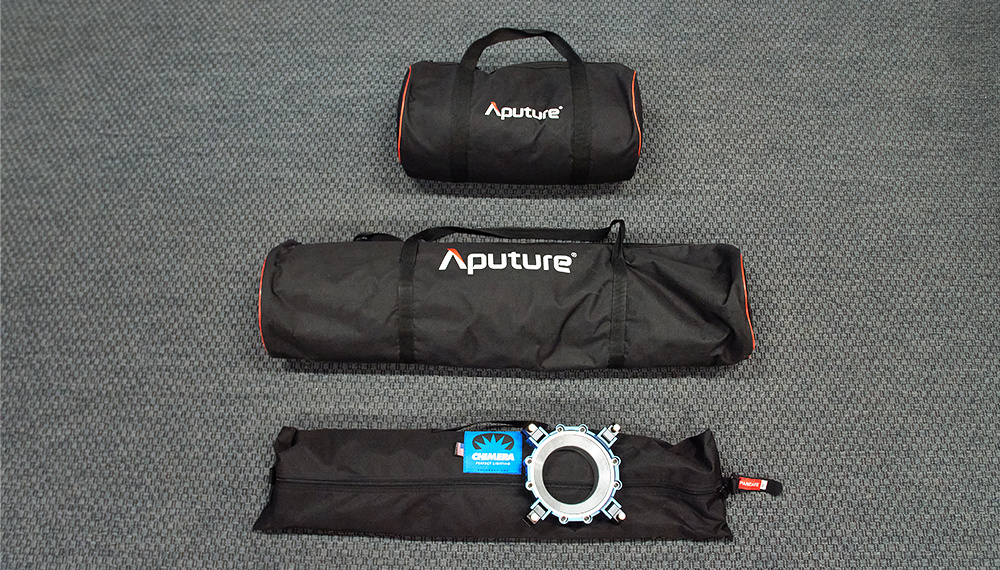Lighting modifiers aren’t quite as expensive as they used to be. However, some of the quality and flexibility has gotten lost along the way.
There’s a new middle ground in the market that Aputure helped spur on. Don’t get me wrong: I love Aputure’s innovations. I think their softboxes and lanterns are brilliant, for the price. Hopefully, this article will help readers understand what they’re missing and why Aputure’s modifiers are game-changing all the same.
Aputure Versus Chimera Lanterns
Let's compare Aputure's lantern ($89) to Chimera's Medium Pancake lantern ($460). These two modifiers are a great example of what I’m talking about. They both spread light in similar ways, and both come with a skirt to control light. That’s where the similarity ends.
Flexibility
Firstly, the Aputure Bowens mount speed ring is permanently attached to the lantern. For certain professionals, this is a deal-breaker. They want to be able to switch between a K5600 Joker speed ring, all the way over to a Profoto speed ring.
Left: Aputure's Lantern and Dome Mini beside Chimera's Medium Pancake lantern. Right: Both lanterns stripped down.
Size
The affixed speed ring on the Aputure lantern also makes it a nightmare to pack. That’s why all of Aputure’s product photography shows the light modifier sitting on top of the light’s case. That's fine if you’re driving to your location, but annoying when flying.
The Aputure lantern doesn’t fit in my 1615 Pelican case, whereas Chimera’s medium pancake easily tucks in. With Chimera, you could fit a lightweight interview lighting set up into a single Pelican.
The Chimera lantern packs into a 1615 Pelican case with a separate speed ring.
Even if you pick up a more appropriate case, this issue persists. Aputure's lantern/softbox takes up most of Tenba’s 38" grip case. If I pack Chimera’s Video Pro Plus softbox, I can easily fit multiple light stands, grip arms, tripods, and accessories. This makes air travel and on-location shooting so much easier.
Durability and Heat Resistance
The third issue with Aputure’s lighting modifiers is durability. On two occasions, I’ve had to send Aputure modifiers back to the studio’s equipment room for replacement. It’s safe to say that they might not last a lifetime. The Chimera feels more substantial in your hands, and I’ve never had issues. Thankfully, the rods are easily replaceable too.

Durability also extends to flexibility. Aputure’s regular sized lantern cannot be used with their 600D or 1200D light fixtures. Unfortunately, they're too hot, the lantern will burn, and it will smell awful.
That’s why Aputure made the Lantern 90 and the Dome 150. Both work brilliantly. They’re not compact or easy to travel with. The Chimera medium lantern here would happily accept a Joker 800, a much hotter HMI light.

Conclusion
Aputure’s lighting modifiers offer so much. They’re quick and easy to set up, they’re affordable, and still lightweight. I’m not looking down on them at all. Sometimes, you need that extra flexibility and reliability. For that, there are the more expensive options on the market.














I love and own quite a bit of aputure stuff, but my Profoto softboxes are 10 years old and still in very good condition, and much more packable. I don’t expect my aputure stuff to last nearly as long. I also fly in for most of my work and the aputure octo box never goes because it’s a space hog.
Same
I own several Chimera softboxes. You can buy them very cheap used and the quality is so much better than the bargain-basement brands.